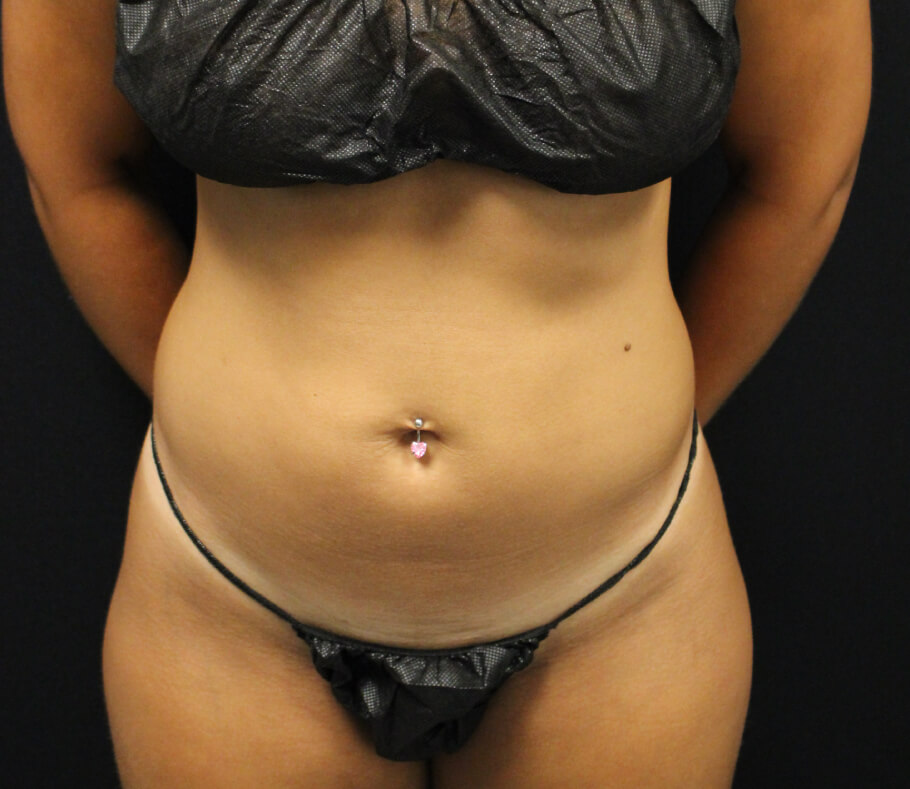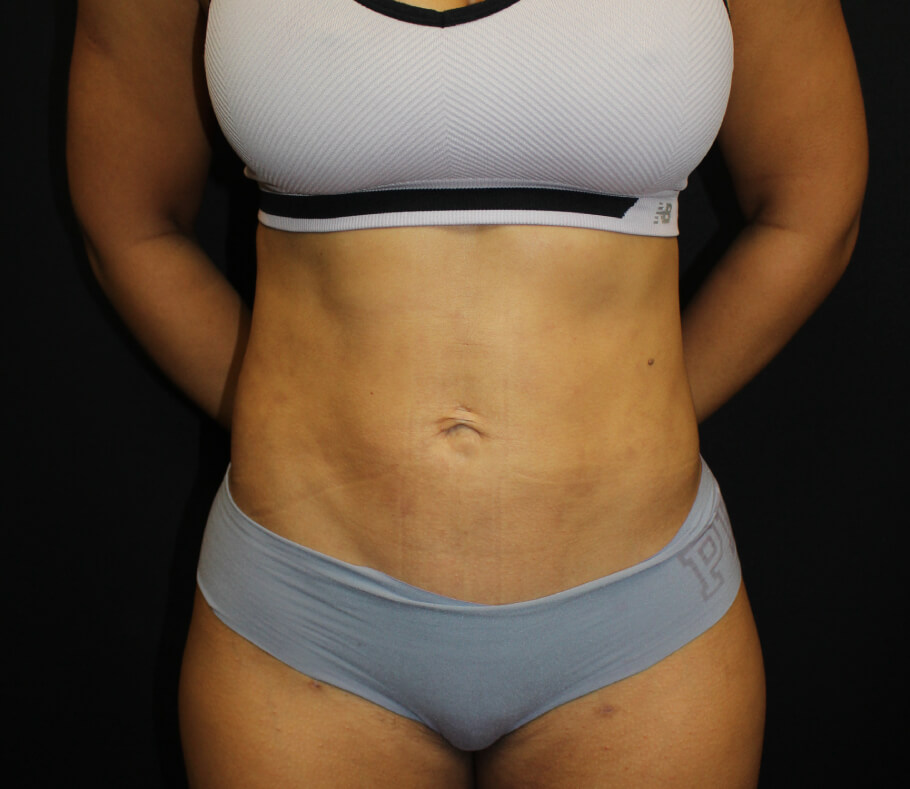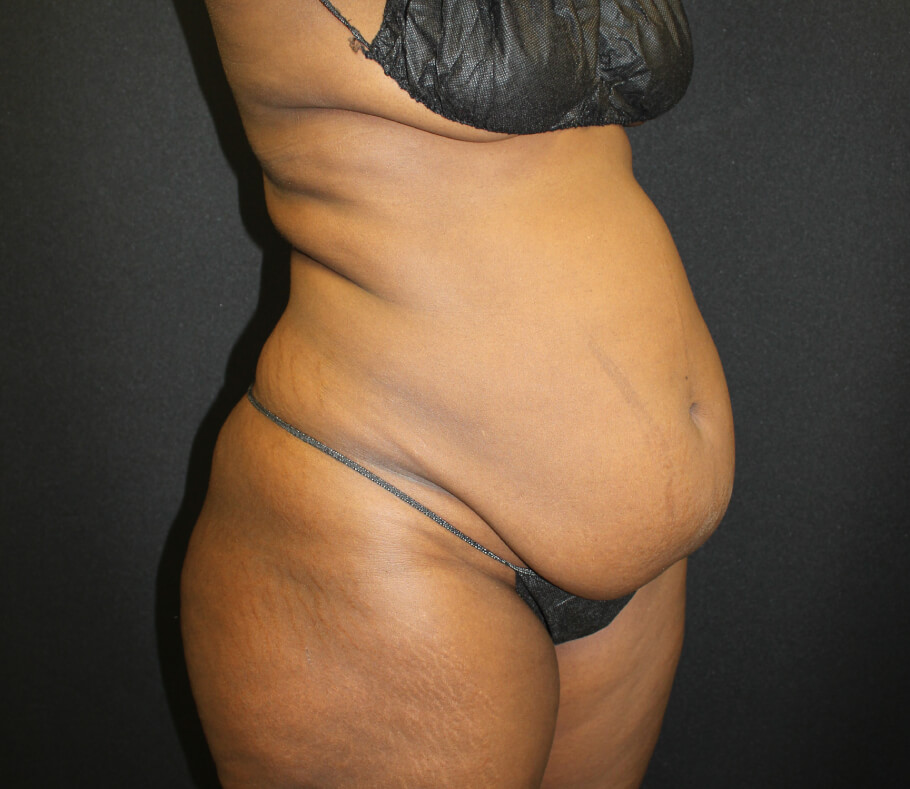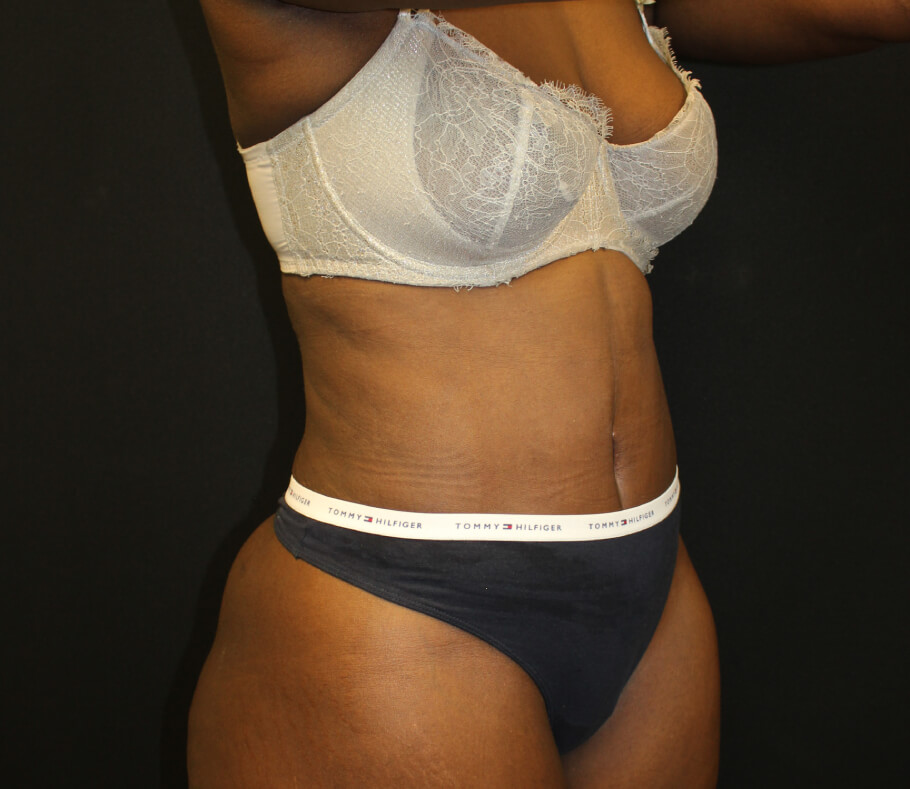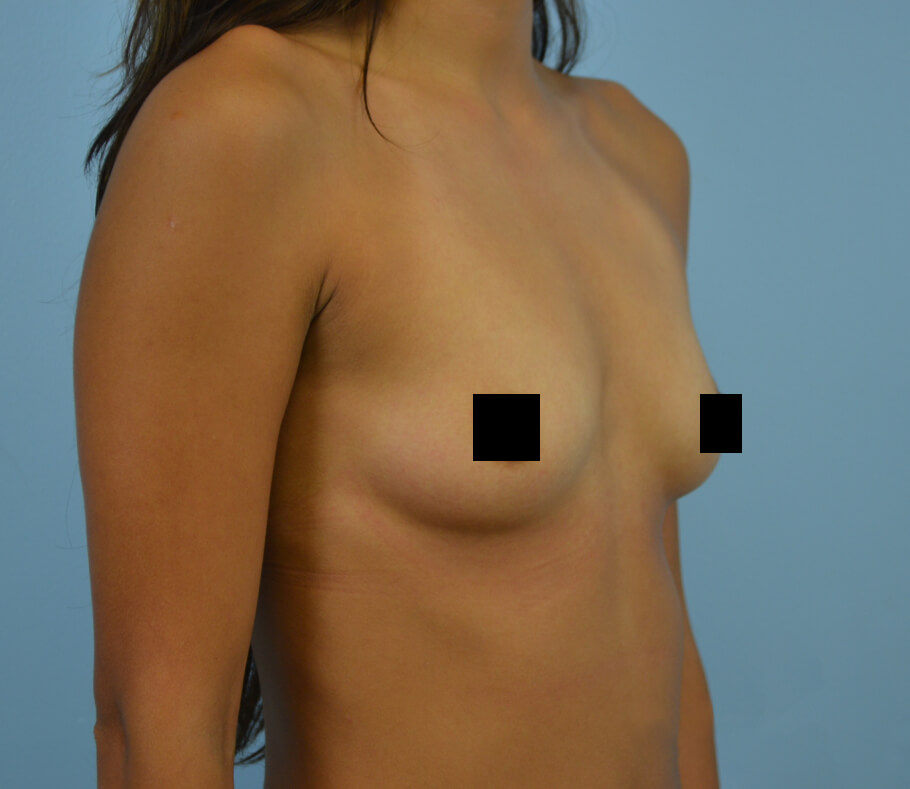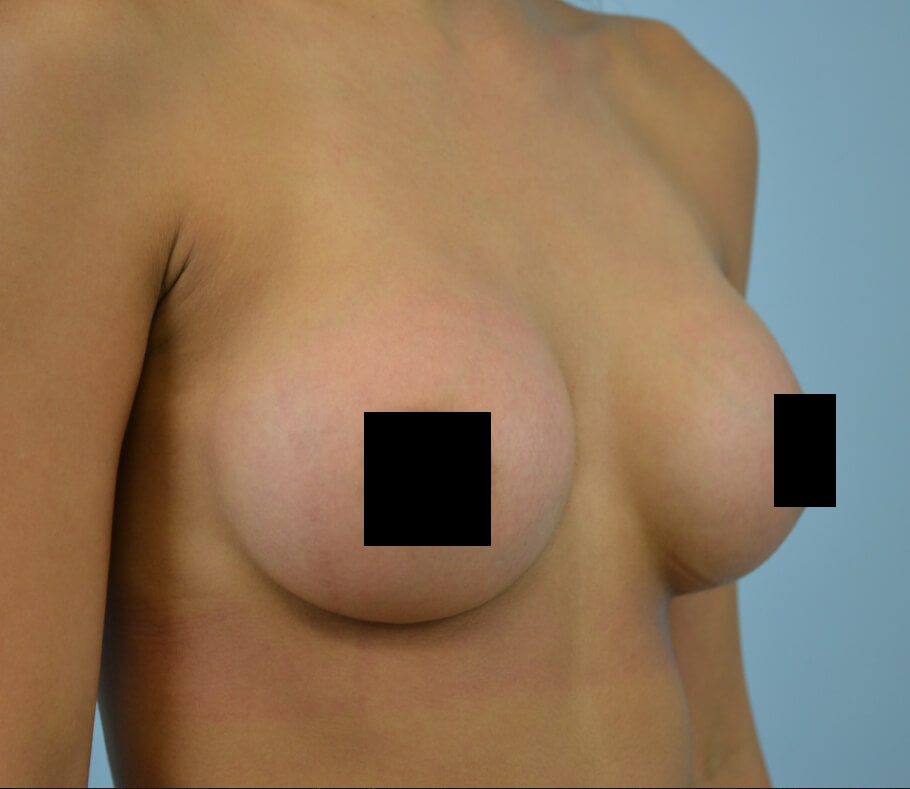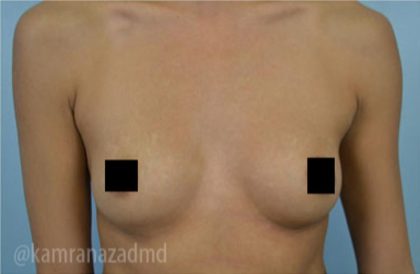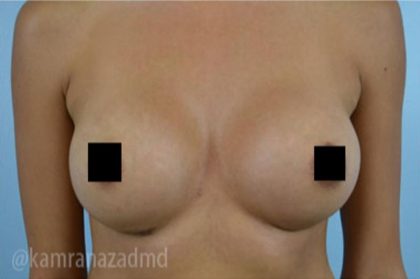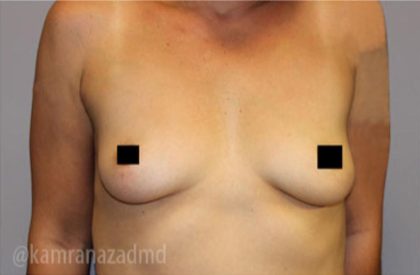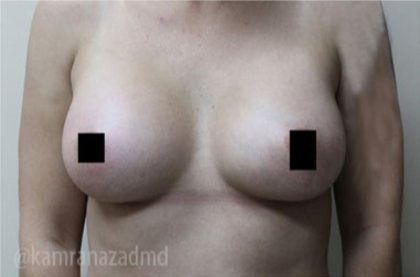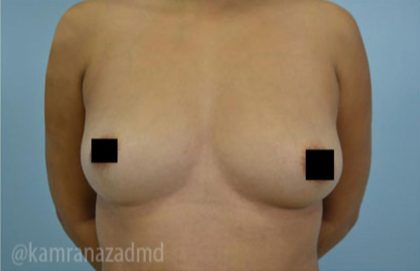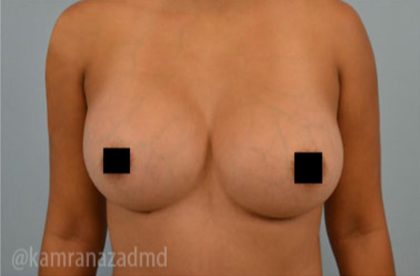Breast Augmentation
Conveniently located to serve the areas of Orlando, FL

Breast augmentation, also known as breast enhancement surgery, is a procedure that increases or restores breast size using silicone, gummy bear, or saline implants, or, in some cases fat transfer. (1) As one of the most popular and frequently performed aesthetic procedures, this surgery has a long and successful track record in satisfying women who wish to enhance, regain, or restore balance to their figures.
Contents
- 1 Before and After Photos
- 2 Schedule Appointment/Unlock Pricing Buttons
- 3 About Breast Augmentation
- 4 See the New You Before Your Procedure in 3D!
- 5 About Breast Augmentation
- 6 Benefits of Breast Augmentation
- 7 Candidates & Consultation
- 8 Preparation
- 9 Procedure
- 10 Recovery
- 11 Results
- 12 Cost of Breast Augmentation in Orlando
- 13 FAQ
- 14 References
Before and After Photos
As a breast augmentation specialist, Dr. Kamran Azad takes pride in his ability to help every patient reach their beauty goals. Contact Azad Plastic Surgery in Orlando by calling (407) 848-3400 to schedule an appointment.
The New 2024 Breast Augmentation Guide from Dr. Azad is now available!
About Breast Augmentation
Many women seek breast augmentation for a variety of reasons. Some may have naturally small breasts that they wish to enlarge, while others may have lost breast volume due to factors such as pregnancy, breastfeeding, weight loss, or aging. Breast augmentation can provide a boost in self-confidence, enhance body proportions, and improve overall aesthetic appeal. If you are unhappy with the size or shape of your breasts and desire a fuller and more balanced appearance, breast augmentation may be the right choice for you.
Between 1997 and 2016, breast augmentation procedures increased by 208 percent. (2)Although this popular procedure will not correct severely drooping breasts, we can combine it with a breast lift (also known as a mastopexy) if you want your breasts to look fuller. This can often be done at the same time as your augmentation, but larger changes may require a separate operation. Dr. Azad will assist you in making this decision.
Dr. Azad looks forward to meeting with you to discuss your plastic surgery inquiries. You will find him and his entire staff at Azad Plastic Surgery to be pleasant, knowledgeable, and helpful. There is a reason why he is considered a top doctor in Orlando and has hundreds of five-star reviews.
See the New You Before Your Procedure in 3D!
With Crisalix’s advanced imaging technology, you can now see the new you in three dimensions!
About Breast Augmentation
Many women have different reasons for undergoing breast augmentation surgery. Whether it’s weight loss, weight gain, personal appearance, or feeling good after childbirth, there are plenty of reasons to choose this procedure. There are also different details regarding breast implants and the type of implant you need to help you achieve the most effective results.
Types of Breast Implants
There are two popular types of breast implants: saline and silicone. Dr. Azad will discuss which implant is right for you and the overall look you wish to attain.
- Saline Implants: Saline breast implants are appealing because they generally cost less than silicone implants. However, silicone may be a better option for some patents with a thin frame because saline implants can ripple along the edges.
- Silicone Implants: Silicone implants are filled with a gel-like substance that feels like natural breast tissue. They’re ideal for thin or physically active women. These implants are designed so that if they were to break or leak- the silicone gel interior will remain intact within the implant. Silicone implant defects are rare- but can be detected through MRI- unlike saline implants which will deflate upon rupture. Read more about silicone implants.
Compare Silicone and Saline Implants.
- Gummy Bear Implants: Gummy Bear implants are gel-based and are known to retain their shape better than other saline or silicone implant types. They are also known to provide more volume to the breast without the extreme shape of other implants. The gel in these implants is thicker, allowing them to retain their shape better, even after rupturing.
Incisions
The most common incisions for breast augmentation is the inframammary incision, which is a 3-4 cm incision along the crease or fold of the breast. This incision type will bypass going to your nipple and breast tissue, and it allows for direct access to the muscle. However, it may leave a scar along the lower portion of the breast that can easily be hidden under a bra or swimsuit.
Implant Placement
During a breast augmentation, an implant placed above the muscle is positioned between the chest muscle and the breast tissue itself, also called a subglandular placement. A submuscular placement is where the implant is positioned under the chest muscles. Submuscular placement will provide more coverage, less rippling and palpability of the implants. There are situations where placing the implant over the muscle will be the better choice. Dr. Azad will go over these points during your breast augmentation consultation.
Benefits of Breast Augmentation
The benefits of a breast augmentation include:
- Improved body proportions: Breast augmentation can restore balanced proportions between the upper and lower body, creating an overall harmonious silhouette.
- Increased confidence: Many women report feeling more confident and comfortable in their bodies after breast augmentation, which can positively impact various aspects of their lives.
- Balanced asymmetrical breasts: Women with breasts of different sizes can achieve better symmetry through breast augmentation, creating a more proportionate appearance.
- Restored breast volume: Pregnancy, breastfeeding, weight loss, or simply the effects of aging can cause a loss of breast volume. Breast augmentation can restore fullness and rejuvenate the breasts, giving them a youthful appearance.
- Customizable options: Breast augmentation offers various types, sizes, and materials of breast implants, allowing for personalized customization based on an individual’s unique goals and preferences.
Candidates & Consultation

If you are considering increasing the size of your breasts, augmentation is likely a good option for you. Dr. Azad can correct asymmetrical breasts and increase your breast volume for your desired look. You will have a consultation with Dr. Azad to discuss implant size, the overall look you want to achieve, and any concerns you may have prior to the procedure taking place. Before you have surgery, there are a few things to keep in mind. Breast implants do not prevent the sagging of breasts. If you are concerned about sagging breasts, you can speak to Dr. Azad about a breast lift in addition to a breast augmentation which can be done in the same surgical procedure.
Preparation
To prepare for a breast augmentation, you will need to follow a set of important instructions to optimize your results. You should arrange for a reliable friend or family member to drive you wherever you need to go post-op until you feel more comfortable or stop taking the prescription medications. Stop all eating and drinking when told prior to your procedure. Smoking can delay your healing process. If you smoke, Dr. Azad will advise you to stop in the weeks before your procedure and continue to abstain for some time after the surgery until your healing is complete.
Procedure
You will be under general anesthesia for the procedure. Dr. Azad will make an incision below your areola, at the base of your natural breast. Dr. Azad will then place the implant underneath the pectoral muscle or directly behind the breast tissue and over the muscle. The implant will be inserted using the “No Touch Technique” using a Keller Funnel. Dr. Azad will then place sutures to close the breast pocket creating an internal bra.
Recovery
Recovery time is highly dependent on the patient and how their body responds to surgery, but the recovery process is not lengthy. Before leaving the center, we will provide specific instructions on how to care for your breasts, medications to use, and when to follow up with Dr. Azad. You will wear a support bra 24 hours a day for the first week or two and will need to clean and apply ointment to the incision sites as directed. The initial recovery period after a breast augmentation is 24 to 48 hours, with an additional reduced activity period for a few weeks. Soreness and swelling can be expected for a few weeks. Exercise and normal activity can resume typically a month after your breast augmentation surgery.
Follow all pre and post-op instructions provided by Dr. Azad and his team.
- You will need to arrange time off work to recover- as well as possible child care if you are a stay-at-home parent.
- If you take prescription pain medication, it’s best not to drive while taking it and to rest often to help your body heal.
- Keep your activity in the days and weeks post-op to a minimum. Try not to lift anything heavy that would put you at risk of opening your incision sites.
- If you feel any pain or discomfort, take over-the-counter pain medication (non-NSAIDs). Dr. Azad may prescribe painkillers as well.
- It may help after surgery to wear a compression bandage or sports bra for extra support. Surgeons recommend avoiding strenuous activities like working out or other related activities for six to eight weeks after surgery.
Sutures
If you have sutures that aren’t dissolvable or you have a drainage port near your incision sites- you will need a follow-up appointment for removal a few days to a week after the surgery. Contact our office immediately if you have any symptoms like shortness of breath or chest pain.
Results
After a breast augmentation, you can enjoy beautiful, natural-looking, perkier breasts that enhance your curves and balance your figure. The long-lasting results and easy maintenance will make the procedure well worth the recovery. If you gain or lose weight, or see changes with age or postpartum, you can always undergo additional procedures to correct these issues. If you undergo more than one augmentation, there is a risk of scar tissue complicating the procedure. Talk to Dr. Azad before you decide to undergo any additional procedures.
Cost of Breast Augmentation in Orlando
The cost of breast augmentation surgery can vary depending on your body goals and your unique treatment plan from Dr. Azad. We offer financing options to make your procedure more accessible.
To book a breast augmentation consultation at Azad Plastic Surgery, call (407) 848-3400 or fill out our simple online form to get started.
View Dr. Azad’s Breast Augmentation Pricing.
FAQ
How do I know what size breast implant to choose for my breast augmentation?
Choosing implants based on your natural breast width as well as the tightness of your tissues is important. Once measurements are taken, you will have a range of volumes based on the amount of projection you want that will safely fit your measurements. You will be able to see samples of actual implants to size to get an idea of what to expect during your consultation. During the pre-op appointment, you will also have the opportunity to useCrisalix 3D imaging technology to create a virtual simulation of potential outcomes. This advanced system allows patients to visualize results before undergoing treatment, enhancing the consultation experience by providing realistic previews of the expected results.
Will I have scars after breast augmentation?
Yes, breast augmentation does involve incisions, which result in scars. However, surgeons use advanced techniques and place incisions inconspicuously to minimize scarring. With proper care and follow-up treatments, these scars will fade over time.
Does breast augmentation correct drooping breasts?
Breast augmentation does not correct severely drooping breasts. If you want your breasts to look fuller and to be lifted due to sagging, a breast lift can often be performed at the same time as your augmentation or may require a separate operation.
How long do breast implants last?
While breast implants are not meant to be lifetime devices, they can last for many years before replacement or revision becomes necessary. The lifespan of your breast implants will depend on several factors, including the type of implant chosen and individual factors.
References
- Fardo D, Sequeira Campos M, Pensler JM. Breast Augmentation. PubMed. Published 2022. https://www.ncbi.nlm.nih.gov/books/NBK482206/#:~:text=Breast%20augmentation%20is%20a%20surgical
- Kaoutzanis C, Winocour J, Unger J, Gabriel A, Maxwell GP. The Evolution of Breast Implants. Seminars in Plastic Surgery. 2019;33(04):217-223. doi:https://doi.org/10.1055/s-0039-1696985
